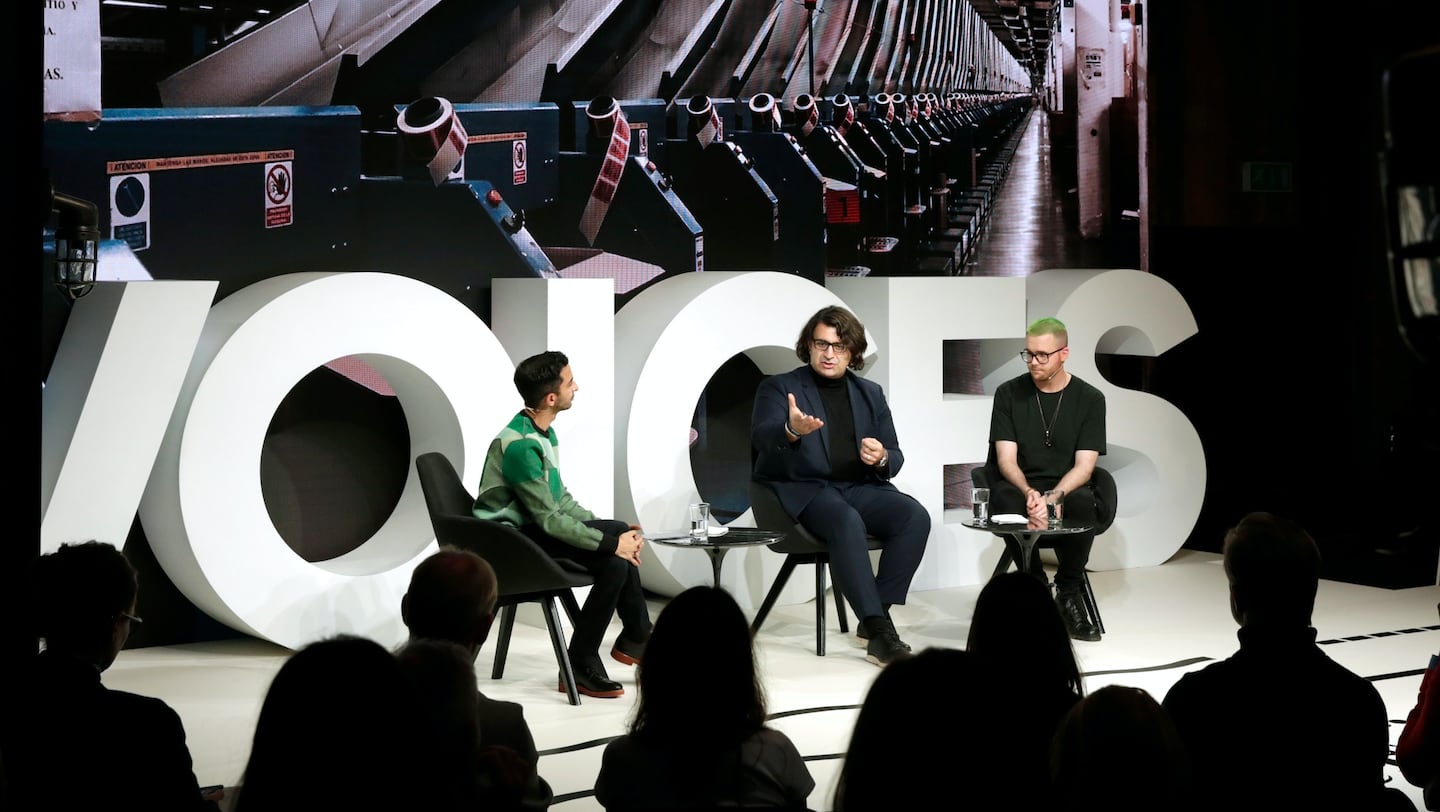
The Business of Fashion
Agenda-setting intelligence, analysis and advice for the global fashion community.

Agenda-setting intelligence, analysis and advice for the global fashion community.

OXFORDSHIRE, United Kingdom — Christopher Wylie, the former fashion trend forecaster who made headlines this year when he exposed how Cambridge Analytica harvested and exploited data from Facebook users, is turning his attention back to the business of selling clothes.
The whistleblower is joining fast-fashion giant H&M Group as its director of research on December 1. At H&M, Wiley will work closely with Arti Zeighami, the retailer's head of AI and advanced analytics, exploring how AI can help fashion better tackle its sustainability crisis. This was their topic of discussion on stage at VOICES, BoF's annual gathering for big thinkers in partnership with QIC Global Real Estate.
Earlier this year, H&M reported it was sitting on a $4 billion stockpile of unsold clothes. And giants like H&M and Zara have long come under fire for fast fashion's contribution to fashion's sustainability crisis. But H&M has been exploring how AI can better match the products it produces with consumer demand, ultimately reducing waste.
“We have so much data that can help us to optimise the whole value chain,” said Zeighami. “A lot of people think about AI and the customer-facing [personalisation] part, but there’s so much to do with optimising the supply chain.”
The move makes business sense. Wiley points out that not only is there a sustainability argument to invest in this kind of technology, but a monetary one too as more efficient production will positively impact a company's bottom line.
There are amazing things you can do with data, it doesn't have to be evil.
“A lot of fashion companies look at the supply chain and the mechanics from production to distribution, but actually understanding consumers will help you optimise the supply chain because you will better understand what it is they want to buy or they don’t want to buy,” he said. “Investing in AI will allow you to not only better match your units of clothing to your customers and therefore make more money, but you’ll also be able to make more money with less units, or less waste.”
Certainly, as the second largest fashion retailer in the world with more than 4700 stores in 69 markets, H&M has billions of data points it can utilise.
Zeighami noted that data and creativity aren’t mutually exclusive. On the contrary, he has seen firsthand at H&M how his work has helped empower the creative employees within the business.
“I’m enabling [the creatives] with the data, but they’re the ones running the projects," he said. "They’re the ones running the organisation but I’m amplifying it with the data.”
While the conversation around AI and data can often circle around negative impacts, such as misuse of data or robotics replacing human jobs, Wiley and Zeighami said they are presenting a proposal that could be a tool to help companies make steps towards reducing their contribution to waste and over consumption.
“There are amazing things you can do with data, it doesn’t have to be evil,” said Wiley.
To learn more about VOICES, BoF’s annual gathering for big thinkers, visit our VOICES website, where you can find all the details on our invitation-only global gathering, in partnership with QIC Global Real Estate.
The app, owned by TikTok parent company ByteDance, has been promising to help emerging US labels get started selling in China at the same time that TikTok stares down a ban by the US for its ties to China.
Zero10 offers digital solutions through AR mirrors, leveraged in-store and in window displays, to brands like Tommy Hilfiger and Coach. Co-founder and CEO George Yashin discusses the latest advancements in AR and how fashion companies can leverage the technology to boost consumer experiences via retail touchpoints and brand experiences.
Four years ago, when the Trump administration threatened to ban TikTok in the US, its Chinese parent company ByteDance Ltd. worked out a preliminary deal to sell the short video app’s business. Not this time.
Brands are using them for design tasks, in their marketing, on their e-commerce sites and in augmented-reality experiences such as virtual try-on, with more applications still emerging.